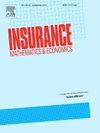Automobile Insurance Fraud Detection Based on PSO-XGBoost Model and Interpretable Machine Learning Method
IF 2.2
2区 经济学
Q2 ECONOMICS
引用次数: 0
Abstract
Automobile insurance fraud has become a critical concern for the insurance industry, posing significant threats to socio-economic stability and commercial interests. To tackle these challenges, this paper proposes a PSO-XGBoost fraud detection framework and uses explainable artificial intelligence to interpret the predictions. The framework combines an XGBoost classifier with the particle swarm optimization algorithm and is validated through a comparative evaluation against other models. Traditional methods, including SVM, Naive Bayes, Logistic Regression, and BP Neural Network, demonstrate moderate accuracy, ranging from 54.1% to 68.6%, while more advanced models like Random Forest reach up to 78.4%. Compared to the standard XGBoost, the PSO-optimized model achieves 3% superior accuracy, achieving an impressive 95% success rate. Moreover, SHAP is used to extract and visually depict the contribution of each feature to the model's predictions. It turns out that the policyholder's claim amount is the most significant factor in detecting automobile insurance fraud, with other factors such as vehicle type, responsible party, and the insurer's age also considerably influencing the prediction performance. This paper therefore proves that combining the PSO-XGBoost model with SHAP approach can substantially improve the early warning and prevention of automobile insurance fraud.
基于 PSO-XGBoost 模型和可解释机器学习方法的汽车保险欺诈检测
汽车保险欺诈已成为保险业关注的一个重要问题,对社会经济稳定和商业利益构成重大威胁。为应对这些挑战,本文提出了一个 PSO-XGBoost 欺诈检测框架,并使用可解释人工智能来解释预测结果。该框架将 XGBoost 分类器与粒子群优化算法相结合,并通过与其他模型的对比评估进行了验证。包括 SVM、Naive Bayes、Logistic Regression 和 BP 神经网络在内的传统方法显示出中等准确率,从 54.1% 到 68.6% 不等,而随机森林等更先进的模型则高达 78.4%。与标准的 XGBoost 模型相比,PSO 优化模型的准确率高出 3%,成功率高达 95%。此外,SHAP 还用于提取和直观描述每个特征对模型预测的贡献。结果表明,投保人的理赔金额是检测汽车保险欺诈的最重要因素,其他因素如车辆类型、责任方和保险人的年龄也对预测性能有很大影响。因此,本文证明了将 PSO-XGBoost 模型与 SHAP 方法相结合可以大大提高汽车保险欺诈的预警和预防能力。
本文章由计算机程序翻译,如有差异,请以英文原文为准。
求助全文
约1分钟内获得全文
求助全文
来源期刊

Insurance Mathematics & Economics
管理科学-数学跨学科应用
CiteScore
3.40
自引率
15.80%
发文量
90
审稿时长
17.3 weeks
期刊介绍:
Insurance: Mathematics and Economics publishes leading research spanning all fields of actuarial science research. It appears six times per year and is the largest journal in actuarial science research around the world.
Insurance: Mathematics and Economics is an international academic journal that aims to strengthen the communication between individuals and groups who develop and apply research results in actuarial science. The journal feels a particular obligation to facilitate closer cooperation between those who conduct research in insurance mathematics and quantitative insurance economics, and practicing actuaries who are interested in the implementation of the results. To this purpose, Insurance: Mathematics and Economics publishes high-quality articles of broad international interest, concerned with either the theory of insurance mathematics and quantitative insurance economics or the inventive application of it, including empirical or experimental results. Articles that combine several of these aspects are particularly considered.
 求助内容:
求助内容: 应助结果提醒方式:
应助结果提醒方式:


